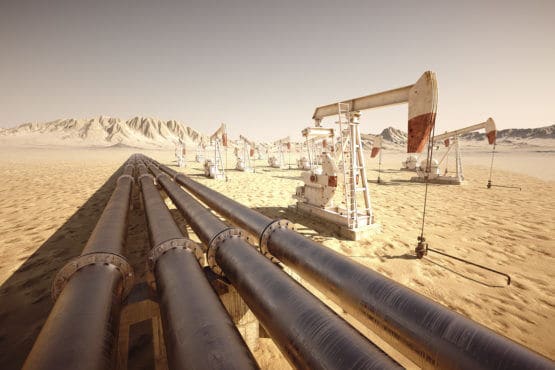In February 2018, Donald Trump signed into law new tax credits that reward oil companies for capturing carbon dioxide and preventing it from entering the atmosphere – either by burying the gas underground or by pumping it into wells to boost production. These tax credits, which have bipartisan support, are encouraging for those who believe that trapping CO2 from the fossil fuel industry – though no substitute for deploying cleaner energy sources – could help combat runaway climate change while society remains reliant on oil, gas and coal.
Now, a Stanford University analysis published Aug. 15 in the journal Joule suggests another way the government could encourage the oil and gas industry to capture and store carbon. The article proposes a model for how relatively small government payments could pave the way for oil reservoirs to stash away more CO2 than their burned contents unleash.
“If you look at air transport, shipping, heavy-duty land-based transportation, these are uses of fossil fuels that are definitely expected to grow,” said lead author Sally Benson, a professor of energy resources engineering at the School of Earth, Energy & Environmental Sciences (Stanford Earth). “As an insurance policy, getting everybody to contribute to solving this problem is really important, including the oil and gas industry.”
Carbon in, oil out
When injected into reservoirs, carbon dioxide can help drive oil and profits from aging wells. The technique, known as carbon dioxide-enhanced oil recovery, has been in use since the 1970s. Oil companies using it today pump in about two-and-a-half tons of carbon for every barrel of oil produced. “When you do that, the emissions from burning the oil are almost identical to the CO2 you’re putting in the reservoir,” said Benson, who co-directs Stanford’s Precourt Institute for Energy.
The problem is that most of the 65 million metric tons of CO2 used in these oil recovery projects each year comes from natural reservoirs – not refineries, power plants or other sources contributing to climate change.
In their analysis, Benson and co-author John Deutch, a professor emeritus at MIT, propose a cost-effective way of encouraging oil and gas companies to double the amount of carbon injected for every barrel of oil and to draw their CO2 from human-related sources. They say a 10-fold increase in the amount drawn from these sources could shrink the nation’s climate emissions by as much as 9.5 percent – even when accounting for the additional oil extraction made possible by injecting all that carbon.
All of this could be done at surprisingly low cost, the researchers claim, if companies start out trapping CO2 from relatively pure streams, like those vented from ethanol and fertilizer plants. According to Benson, experience gained on these projects could then help to drive down the cost of capturing and treating CO2 from mixed emission sources, such as cement and power plants.
Lighting a fire
Benson and Deutch, who is a former head of the Central Intelligence Agency and deputy defense secretary, argue that government should encourage industry to prepare for a future with an economy-wide price on carbon emissions – in part by developing better carbon storage technology.
Doubling the amount of CO2 per barrel of oil compared to the standard practice today, as Benson and Deutch envision, would almost certainly be more expensive for operators. The new analysis suggests it would add at least $22 per ton of injected carbon in a hypothetical scenario where oil costs $100 a barrel.
“That’s a lot of cost for an oil company,” Benson said. “If one company does it and they don’t all do it, then your products are just more expensive than the competition. People just buy the cheapest crude oil they can.”
To overcome those costs and spur development of technology for carbon-negative oil recovery, the researchers suggest the government pilot test something called a reverse Dutch auction. Owners of new oil recovery projects would submit bids to the government specifying how much money they would want as a reward for carbon injection and how much CO2 they expect the project to ultimately sequester.
With this system, Benson and Deutch estimate it would cost the government about $25 per ton of carbon dioxide captured. If 30 projects earned that amount for a decade apiece, the program would trap 264 million tons of CO2, and government spending on the experiment would total $6.6 billion.
For comparison, the newly expanded tax credits offer $35 per ton of CO2 captured and put to use, or $50 per ton if the carbon is simply buried. According to Benson, her proposed pilot program could cost less and provide incentives for a wider variety of companies that may not benefit from a tax credit.
If our reporting has informed or inspired you, please consider making a donation. Every contribution, no matter the size, empowers us to continue delivering accurate, engaging, and trustworthy science and medical news. Independent journalism requires time, effort, and resources—your support ensures we can keep uncovering the stories that matter most to you.
Join us in making knowledge accessible and impactful. Thank you for standing with us!

